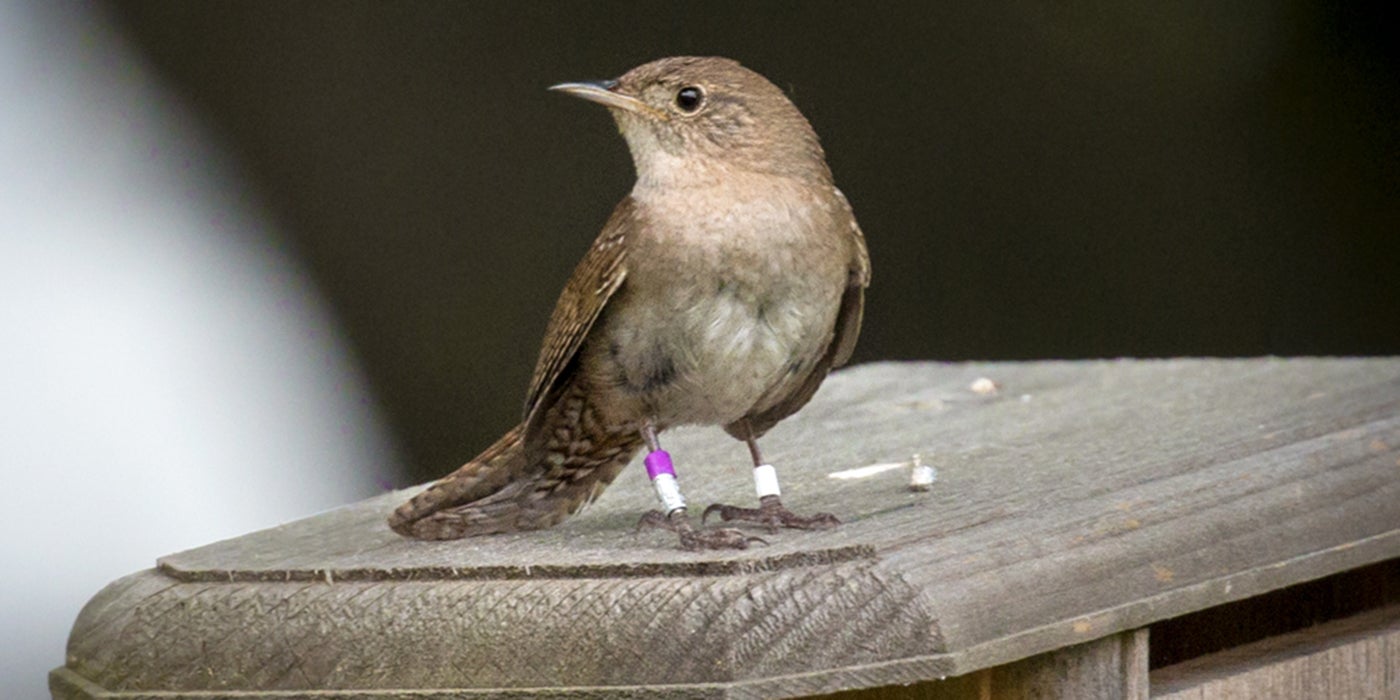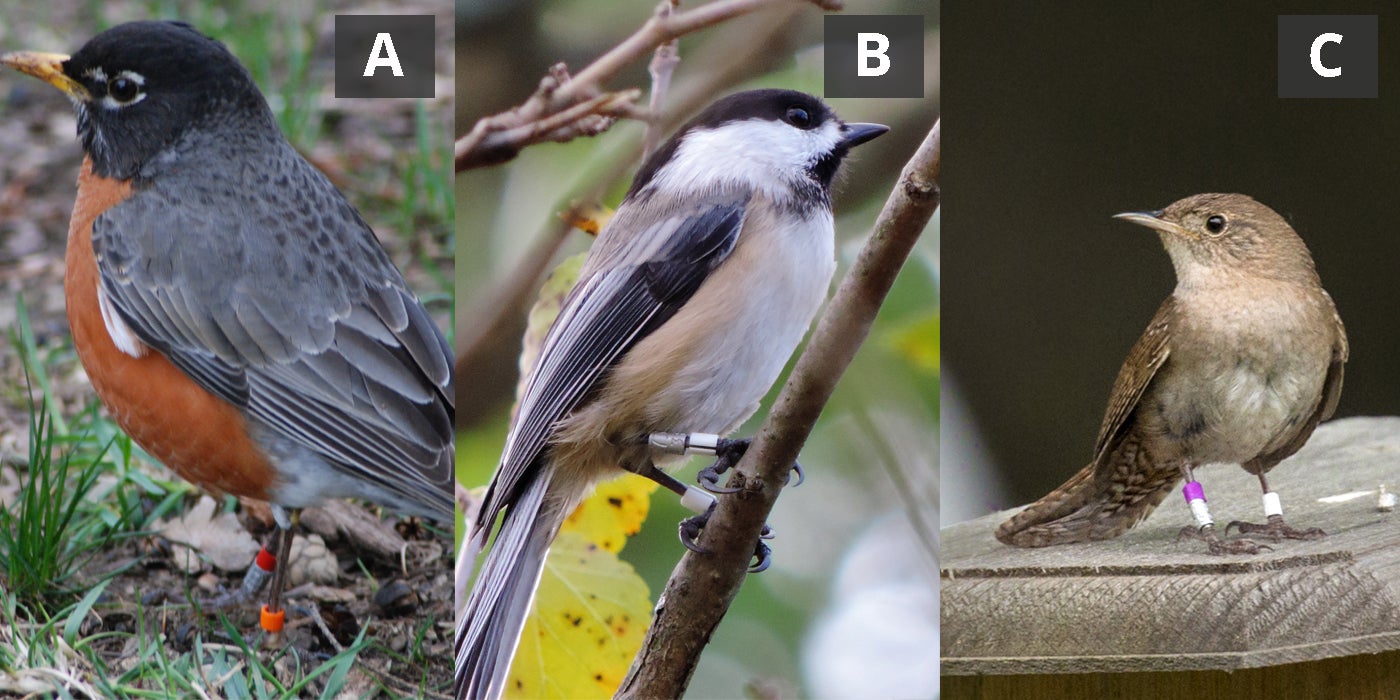Re-sighting Color-banded Birds

Neighborhood Nestwatch gives participants unique opportunities to advance the understanding of urban bird survival.
Each year hundreds of birds join the thousands that have already been color-banded in Nestwatch backyards and schoolyards. Nestwatch staff, together with a network of citizen scientists, work diligently to re-sight these color-banded individuals. This dedication leads to estimates of annual survival, a powerful tool used to help understand the impact of urbanization on resident and migratory birds. Every single report of a banded bird in or near a yard is exciting and strengthens Nestwatch data.
Participants may count a re-sighted banded bird once. Lucky participants in Glenn Dale, Maryland, have re-sighted a bird for nine consecutive years!
Reports of re-sightings are the most common data contributed by Nestwatch participants, but getting a decent look at a bird’s legs can be challenging. Here are some tips for re-sighting color-banded birds and reporting data as accurately as possible:
- Remember that Nestwatch uses three or four bands. Two or three color bands and one aluminum band are applied in varying combinations on both legs. The color code key is:
- X: Metal
- O: Orange
- R: Red
- K: Black
- P: Pink
- W: White
- B: Blue
- M: Purple
- Y: Yellow
- Keep your list of color-banded birds in a readily accessible place.
- Try to visualize what those bands might look like on a bird.
- Depending on a bird's habits, using binoculars can be very useful.
- Remember that if a bird is facing you, the combination of bands on its legs will appear backward.
- Remember that the color combinations recorded on the Neighborhood Nestwatch website or on your list are in order from the bird's left leg to its right leg. The comma in the combination divides the bands on the left leg from those on the right. If two colors are on one leg, the color on the left is on top of the color on the right. Practice recording these color combinations with the quiz below.
- You may only have to catch a glimpse of one of the three or four bands on a bird's legs to identify it. When a Nestwatch crew member bands many individuals of one bird species in your yard, they attempt to give each bird as varied a color combination as possible, making it easier to distinguish one individual from another.
- Keep in mind that birds may lose color bands over time.
- Be patient. Sometimes a naked eye is all it takes, as a robin prances across the lawn in front of your kitchen window. But most often, patience and persistence (along with a good pair of binoculars) is a successful formula.
- If you re-sighted a bird but do not have ready access to the internet for immediate reporting, write your observations down on the re-sighting color-banded birds form for online submission later.
Test Your Re-sighting Skills
How would you record the color combinations for the following birds?

Answers
Photo identification:
- Photo A: O, RX - Orange, Red/Aluminum
- Photo B: W, XW - White, Aluminum/White
- Photo C: W, MX - White, Purple/Aluminum
Video identification:
- RX, G: Red/Aluminum, Green